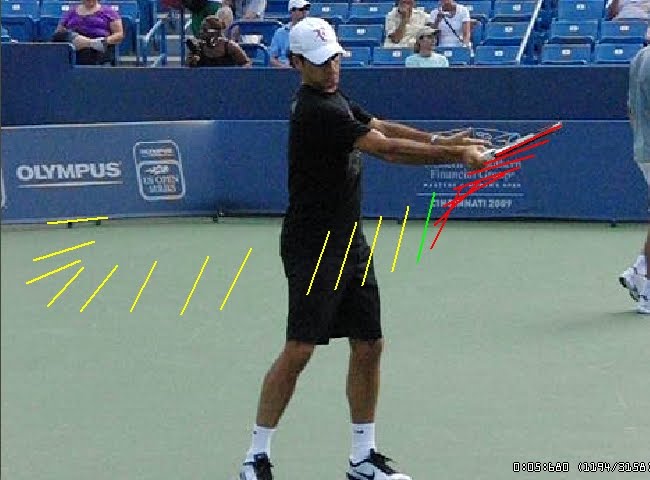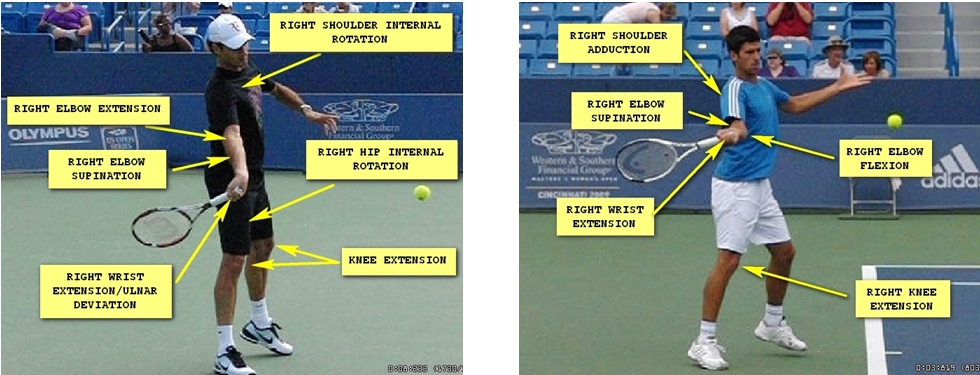Nicholas Kakatsis
Rookie
I recently started training with a former ATP player, now in his mid 50.
Have a problem i want to fix. Hit the ball with too much power but mostly flat and very inconsistently.
He had a look and said :” well you have only one major problem. Too much ESR, no or limited ISR and as such racquet face is mostly vertical or open. When you get it vertical then all is great. Otherwise a disaster. To compensate you go “under the ball” again though with open racquet face and end up golfing the ball to the next court.”
He showed me my arm in slow mo. The ESR is so much that the “inside of my elbow” (where we usually get our blood drawn for tests) is pointed to the right side! Then ltd ISR and so on...
so he made me do ISR without using the forearm and only the shoulder. The thing he asked my to have in mind is :” Forget the ESR. It will happen automatically since you have a relaxed arm, hand etc. DO NOT ESR! Start the swing as if you want once you start to hit the ball by rotating the elbow so the outer side “points the sky”. It is a queue to force your mind to use the shoulder a lot sooner in the stroke.”
it helped me a lot. And not only with the stroke but also with the balance of my body. Significantly improved.
hope it helps others too
Have a problem i want to fix. Hit the ball with too much power but mostly flat and very inconsistently.
He had a look and said :” well you have only one major problem. Too much ESR, no or limited ISR and as such racquet face is mostly vertical or open. When you get it vertical then all is great. Otherwise a disaster. To compensate you go “under the ball” again though with open racquet face and end up golfing the ball to the next court.”
He showed me my arm in slow mo. The ESR is so much that the “inside of my elbow” (where we usually get our blood drawn for tests) is pointed to the right side! Then ltd ISR and so on...
so he made me do ISR without using the forearm and only the shoulder. The thing he asked my to have in mind is :” Forget the ESR. It will happen automatically since you have a relaxed arm, hand etc. DO NOT ESR! Start the swing as if you want once you start to hit the ball by rotating the elbow so the outer side “points the sky”. It is a queue to force your mind to use the shoulder a lot sooner in the stroke.”
it helped me a lot. And not only with the stroke but also with the balance of my body. Significantly improved.
hope it helps others too


